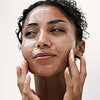Dead Sea Mud vs Regular Mud — What’s the Real Difference?

💭 Introduction
When you think of a mud mask, you might imagine any dark-colored clay drying on your face. But not all muds are created equal. There’s a world of difference between mud scooped from your garden and the mineral-rich mud extracted from the Dead Sea.
In this blog, we compare the properties, benefits, and results of Dead Sea mud versus regular cosmetic clays like kaolin or bentonite—so you know what your skin really deserves.
1. Source & Composition
🌊 Dead Sea Mud
- Harvested from the hypersaline banks of the Dead Sea
- Contains 21+ active minerals including magnesium, calcium, potassium, and bromide
- Unique, ancient, and world-renowned for its skin-rejuvenating properties
🪨 Regular Mud/Clay (Kaolin or Bentonite)
- Common cosmetic clays
- Typically contain just 1–2 minerals
- Not designed for comprehensive skin therapy
⚖️ 2. Therapeutic Properties
Dead Sea Mud
- Clinically proven to help with eczema, psoriasis, acne & even joint pain
- Deep anti-inflammatory & detoxifying action
- Safe for all skin types—including sensitive and mature skin
Regular Mud/Clay
- Primarily absorbs oil & impurities
- Can over-dry or irritate sensitive skin
- Lacks the multi-mineral healing and hydrating benefits of Dead Sea mud
🔬 3. Skin Benefits Comparison
| Feature | Dead Sea Mud | Regular Clay |
|---|---|---|
| Mineral-rich | ✅ 21+ minerals | ❌ Low mineral count |
| Hydration support | ✅ Hydrating minerals | ❌ Often drying |
| Acne treatment | ✅ Antibacterial action | ⚠️ Only oil absorption |
| Sensitive skin safe | ✅ Yes | ⚠️ May irritate |
🧴 Product Suggestions
🧠 Final Thought
Your skin is precious—don’t settle for generic clay. Dead Sea mud isn’t just skincare, it’s skin therapy. Experience the difference with just one application!
Ready to upgrade your glow? Discover our full Dead Sea Mud Collection today.

















